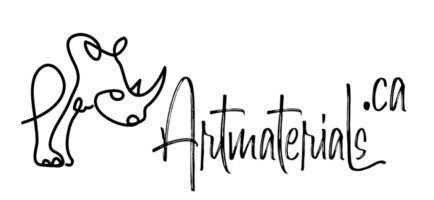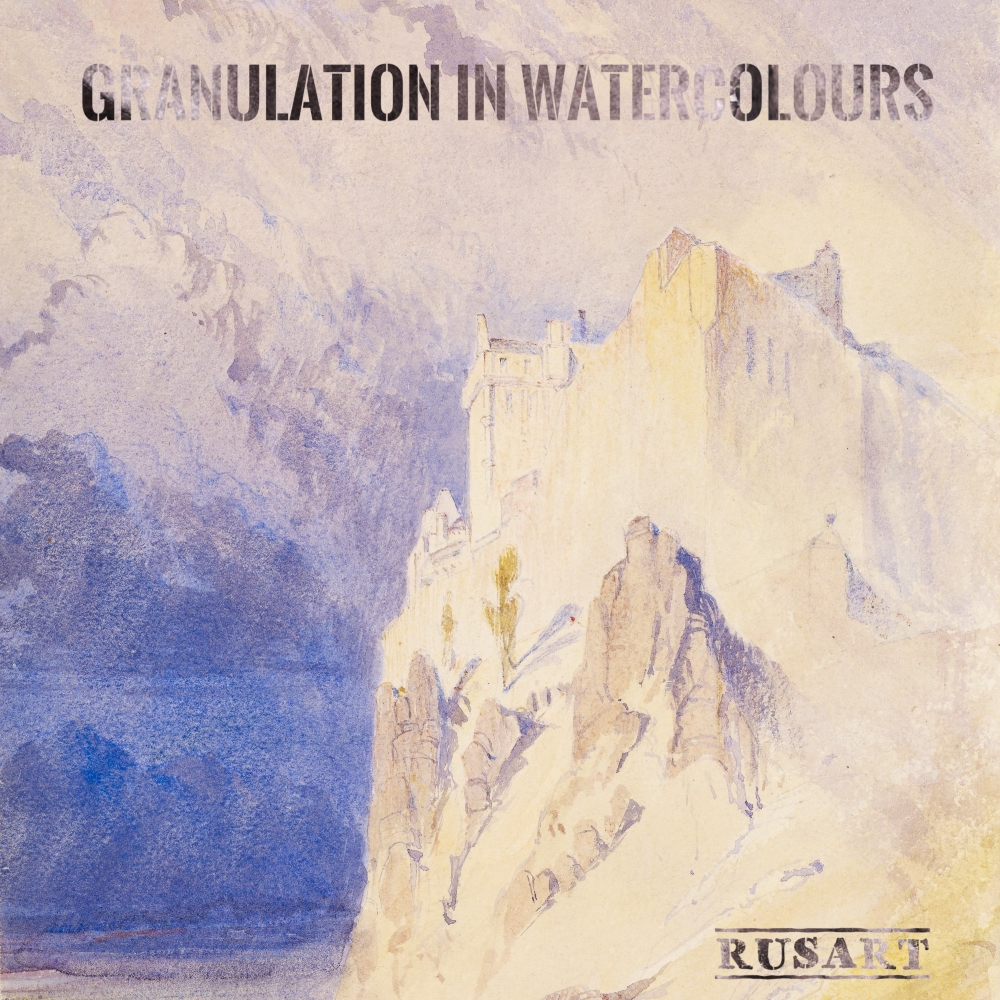Watercolour is a very unique medium, and as result we see depends on many factors:
- paper
- amount of water used
- paint quality
- brushes and
- mediums.
Today we’ll take a closer look at granulation.
What is Granulation
Generally speaking, we observe granulation in watercolours when pigment particles don’t evenly cover the paper during or after painting. Granulation implies sedimentation and sometimes flocculation.
These two processes are very similar to each other, but not the same. While the sedimentation occurs when pigment particles separate from each other and naturally fill imperfections in paper or settle down on a surface, the flocculation happens when pigment particles form some random textures and patterns. Heavy mineral pigments combined with high pigment load allow you to achieve both, sedimentation and flocculation.
Why Granulation Happens
Chemistry and physics explain everything. As watercolours (like any other kind of paint) contain binder and pigment, here we get relationship between their masses, particle sizes and densities. When pigment is lighter and finer than the binder we get smooth washes, and when pigment’s particles are bigger and rougher, we get granulation. It happens because binder can’t hold particles well together and water that we use during painting breaks the adhesion between them.
What Pigments are Granulating
As rocks, metals, and other minerals are usually heavy, natural mineral pigments tend to show more granulation, such as:
- cobalts blue and green – PB28, PG19 etc.
- cadmiums ed and orange – PO20, PR108 etc.
- earth green PG23
- some ultramarines PB29
- Siennas and umbers PBr8, PBr12, PY43 etc.
- Oxide iron black PBk11
- Van Dyke NBr8
PBk11 shows very strong granulation that explains this pigment’s use in many mixes to achieve granulation properties. For example, in such mixes like Payne’s Gray, forest green, deep blue or deep brown colours.
Also, paints made from semi-precious stones are very granulating, such as malachite, lapis lazuli, sodalite, serpentine etc.
For the smoothest washes man-made synthetic organic pigment would be the best choice. Their particles are so fine that a lot of milling cycles required to achieve good bond between the particles and a binder. Here are some examples of smooth (non-granulating) pigments:
- phthalo blue and greens PB15, PG7
- Pyrrole red PR254
- Hanza yellow and orange PY65, PY3, PO5
- Quinacridones, including reds and magenta PR122
- Perylene Red PR149
- Alizarin Crimson NR8
As you could notice, bright yellow and red colours are normally smooth, while blues and blacks have naturally more granulating options.
How to Increase Granulation in Watercolours
There are many ways how to show more texture in your watercolours:
- Use more water. As water dilutes binder using more water provokes sedimentation
- Add granulating pigments. Adding colour containing PBk11 while mixing will increase granulation
- Use textured paper for sedimentation and smooth paper for better flocculation. As heavy particles tend to fill the gaps and holes, pigment will settle down in “dents” in paper. To show flows of particles we should use smooth paper to direct the paint.
- Add granulating medium
Experiment with your paints to achieve desired appearance. Most of RUSART Naturals watercolour paints are granulating as we prefer non-toxic mineral pigments for our paints when it’s possible. If mineral pigments are toxic or not ethically sourced we use synthetic man-made pigments.



























Elizabeth Hrabowsky August 7, 2022 at 1:55 pm
Great article explaining granulation pigments. Thanks so much
Elena Test August 8, 2022 at 4:57 pm
Thank you so much!